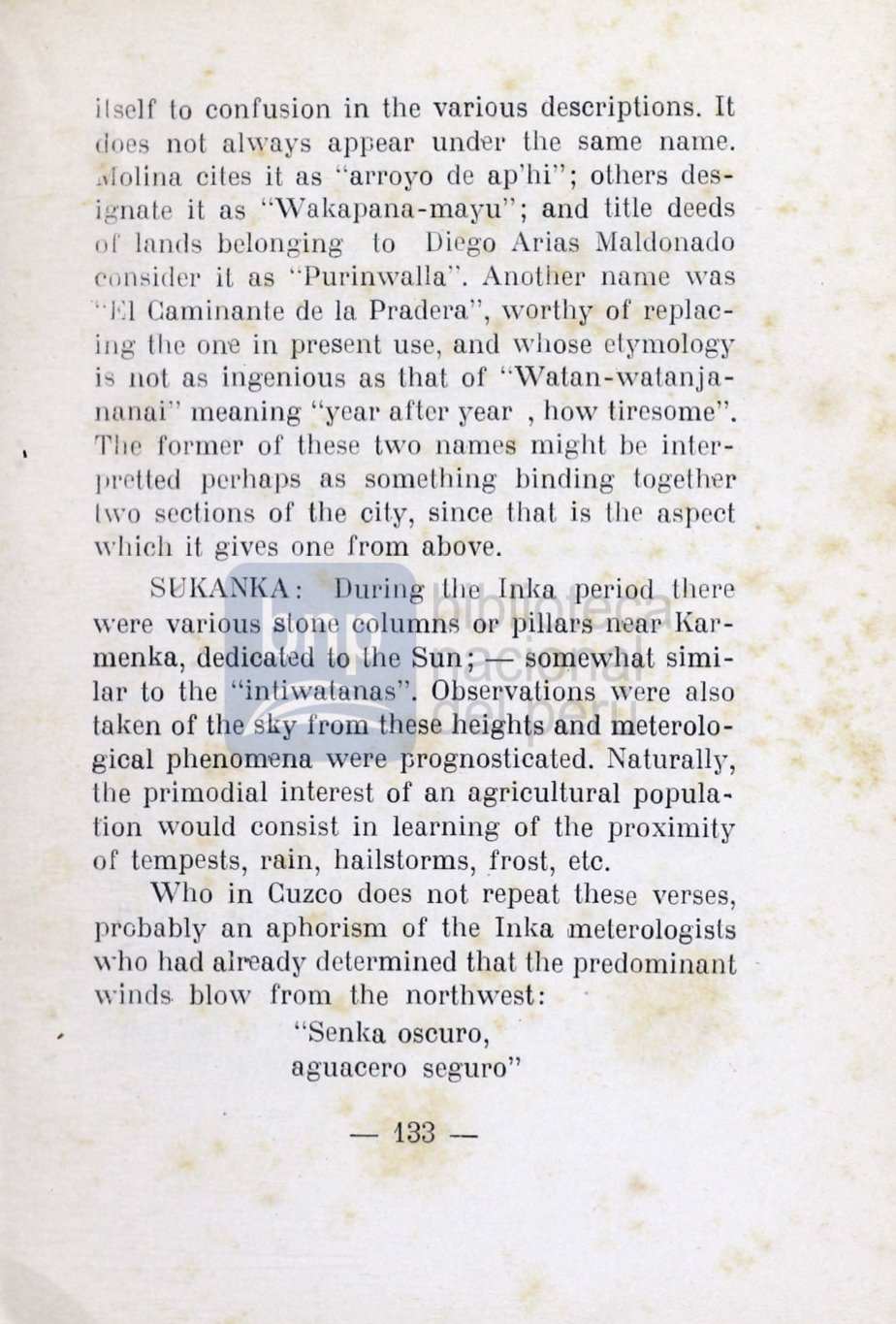

;
i
!
s
lf
to confusion in the various descriptions. It
lo
not alvvays appear under the same name.
Hi
olina cites it as arroyo de ap hi '; others des–
i gnat
it as- 'Wakapana-mayu"; and title deeds
o
C
lancl bel n °·ing to Diego Arias lVIaldonado
rnns ic1 r U as ' Purinvvalla . Another nan1e \vas
°' ·El aminante de la Pradera', vvorthy of replac–
ing th on in pres nt use, and -vvhose etyn1ology
i -.
not as irigenious as that of 'Watan-watanja–
nanai ' meaning "year after year , how tiresome".
'rll
former of these two na·m s might b inter-
1n·ctted p rhaps as something binding togeth r
l
\\' O
s ctions of the city, since that is the aspect
\Vhich it gives one from above.
SUKAN
During the
~1ka.
eriod there
" :ere various
stofie
e-olumns or pillars near Kar–
menka, dedicaded to the Sun · -
so~ewhat
simi–
lar to the "in · ·ata.nas". Obse vations \Vere a.lso
ta.ken of
t ,
~Y
from these heights and meterolo–
gical phenomena were prognosticated. Naturally,
the primodial interest of an agricultura! popula ..
tion would consist in learning of the proximity
of tempests, rain, hailstorms, .frost, etc.
Who in Cuzco does not repeat these verses,
probably an aphorism of the Inka meterologists
"'~ha
had already determined that the predominant -
vYinds. blow from the northwest:
"Senka oscuro,
aguacero seguro"
- 133 -
















